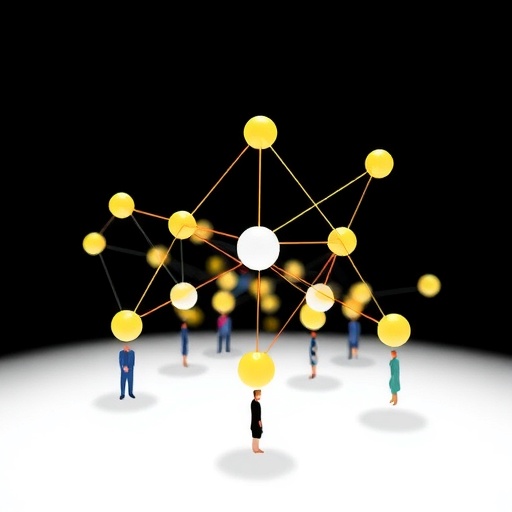As summer draws to a close, the annual return of many vacationers to their homes in northern Europe creates an intricate tapestry of travel patterns and destinations. This seasonal influx from coastal retreats in regions like southern France, Spain, and Italy inevitably leads to overwhelming congestion in various transport networks, particularly in alpine passes and coastal routes. This pattern of movement embodies a network, rich with communities shaped by collective origins and destinies that reveal the dynamics of human behavior during the seasonal migration.
Network science, particularly community detection, plays a pivotal role in comprehending these complex interrelations. For many years, researchers have honed methodologies to reveal communities within networks—defined as groups of nodes that are tightly interconnected. Traditional community detection tools have excelled in analyzing undirected networks, where connections flow both ways, making the identification of groups relatively straightforward. Such networks can represent relationships on platforms like Facebook, user engagement metrics on social media, or even demographic clusters where people reside.
Utilizing established modularity algorithms allows researchers to infer connections among diverse communities, providing meaningful insights that foster opportunities in commercial enterprises as well as potential sociopolitical ramifications. For instance, uncovering shared interests among different communities could illuminate unexpected links, such as individuals participating in both recreational fishing and a niche non-alcoholic beverage market. The capability to extract this level of nuanced information is critical in various contexts, from marketing strategies to understanding societal behaviors in complex settings, like electoral influence.
However, when transitioning to directed networks—where interactions and flows have a directional component—the definition of community becomes increasingly ambiguous. Many conventional methodologies either disregard directionality or apply it inconsistently, leading to an underappreciation of the subtleties inherent in these complex systems. A groundbreaking study from researchers at the École Polytechnique Fédérale de Lausanne (EPFL) and the University of Geneva seeks to redefine community detection in directed networks. By focusing on both the membership of nodes and the flow of information among them, this study offers a dual approach that enhances our understanding of network dynamics.
The concept of bimodularity is central to this new framework. Through innovative mathematical techniques, researchers at Dimitri Van De Ville’s Laboratory of Medical Image Processing and Analysis have succeeded in refining community detection to account for directions within networks. Their approach not only highlights which locations see greater outbound migrations during summer but also pinpoints the preferred destinations that vacationers flock to for leisure activities such as sunbathing and swimming.
With bimodularity, a key advancement is the differentiation between senders and receivers within a network context. This refinement signifies substantial progress in capturing the nuanced interactions among communities. Dimitri Van De Ville articulates the importance of this shift, stating, “With bimodularity, we can finally distinguish senders from receivers in a network. That means finer-grained detail in how communities interact—who’s sending and who’s receiving.” This clarity in directionality offers deeper insights into travel behaviors, revealing not just who travels where, but how information and influences traverse these networks.
What distinguishes this new methodology is its innovative approach to defining communities—not by clustering nodes, which has been the standard practice, but instead by clustering the edges comprising those nodes. Consequently, rather than determining which individuals belong to a community based on geographical or social ties, the algorithm parses interactions that exhibit similarity in terms of the outward flow of influence. This edge-centric methodology leads to the revelation of bifurcated communities, which cluster based on the roles of information transmitters and recipients. This dual-community framework, referred to as bicommunities, presents a significant evolution in network analysis.
In practice, this innovative approach facilitates a richer understanding of community dynamics. For instance, in addition to visualizing clusters of nodes—represented by distinct colors in traditional methodologies—the researchers can now illustrate community structures using directional arrows. This valuable enhancement unveils a profound layer of connectivity, allowing analysts to comprehend relationships and interactions more thoroughly. Now, it is possible to ascertain not just who is part of a community, but also how they are integrated into other networks—be they influencers versus followers, commuters versus holidaymakers, or other distinct groupings.
While this groundbreaking research may not have alleviated the congestion of this summer, its implications for future network analysis are promising. The researchers have applied bimodularity to an extensive dataset concerning neuronal activity from the roundworm C. elegans. Astonishingly, the new algorithm not only conformed perfectly to existing anatomical data but also unearthed previously unknown configurations of neurons, illuminating their functional roles within the nervous system.
The ramifications of this discovery extend beyond mere confirmation of known neural pathways. Van De Ville notes, “What’s exciting is that bimodularity doesn’t just confirm the known flow from sensory input to motion—it also reveals the intermediate steps in between, like sensory to processing and processing to motion.” These insights may unveil causal pathways for brain activity, offering potential breakthroughs in understanding neuroplasticity and its role in facilitating recovery mechanisms following events such as strokes. The ability to visually and mathematically explore these connections opens the door to new avenues of research and therapeutic approaches in neurosciences.
In conclusion, the innovative work performed by the EPFL and the University of Geneva marks a watershed moment in network science. The introduction of bimodularity stands to enhance not only academic understanding but also practical applications across diverse fields of research and industry. By acknowledging the complexities of directionality and employing a nuanced approach to community detection, researchers can glean rich, multilayered insights into the dynamics of interconnected systems, ultimately enriching our understanding of human behavior and interactions in an increasingly networked world.
Subject of Research: Bimodularity in directed networks
Article Title: Community detection for directed networks revisited using bimodularity
News Publication Date: 25-Aug-2025
Web References: http://dx.doi.org/10.1073/pnas.2500571122
References: Proceedings of the National Academy of Sciences
Image Credits: Credit: EPFL
Keywords
Network science, modeling, community detection, bimodularity.




